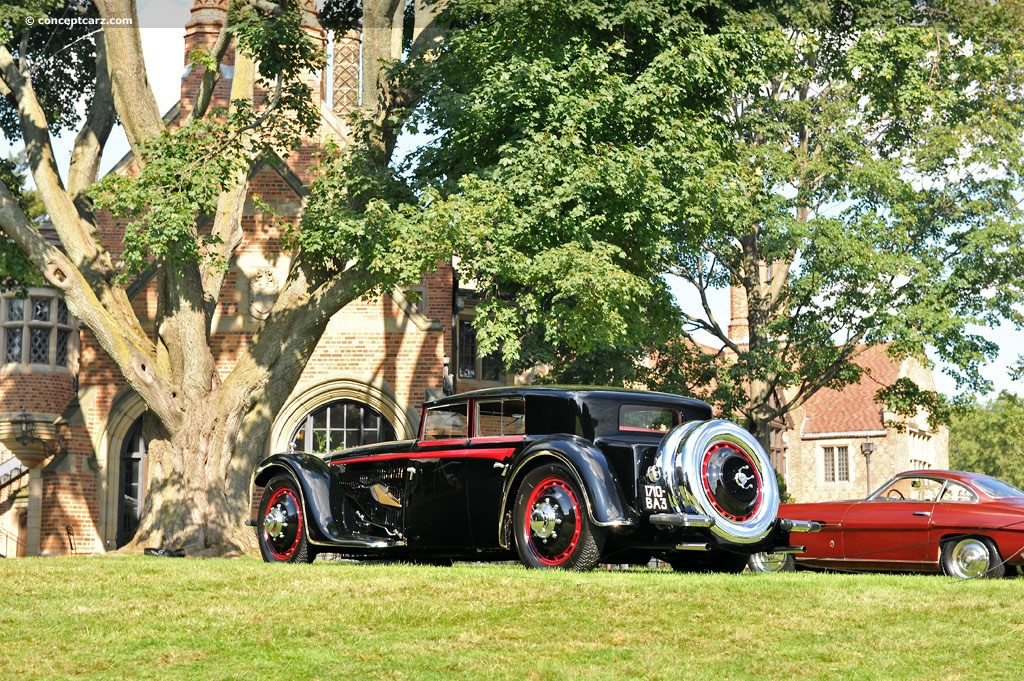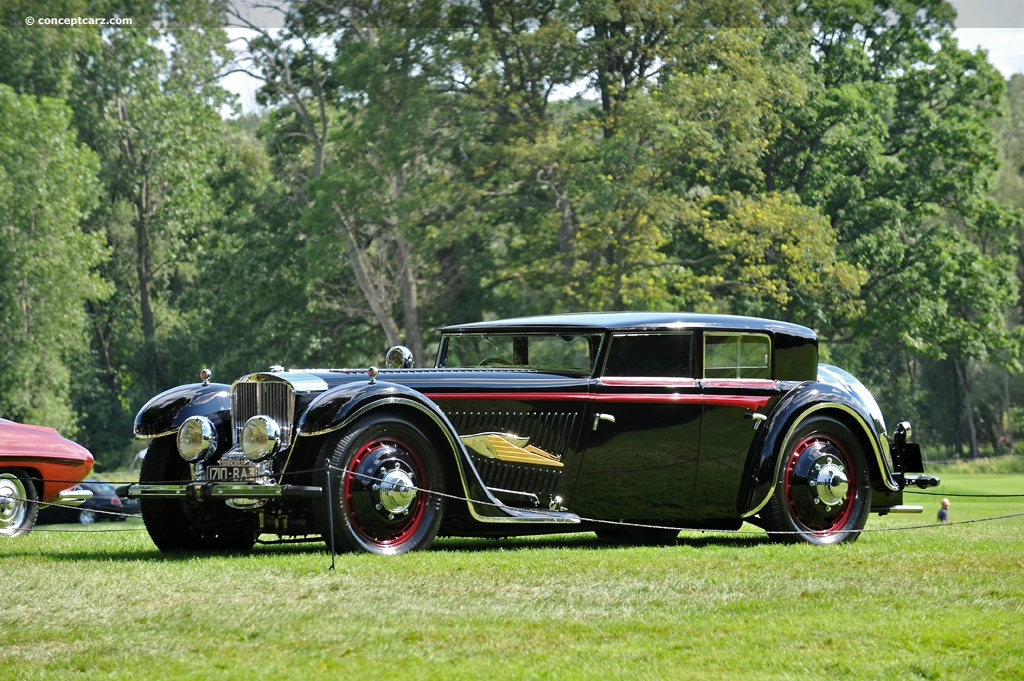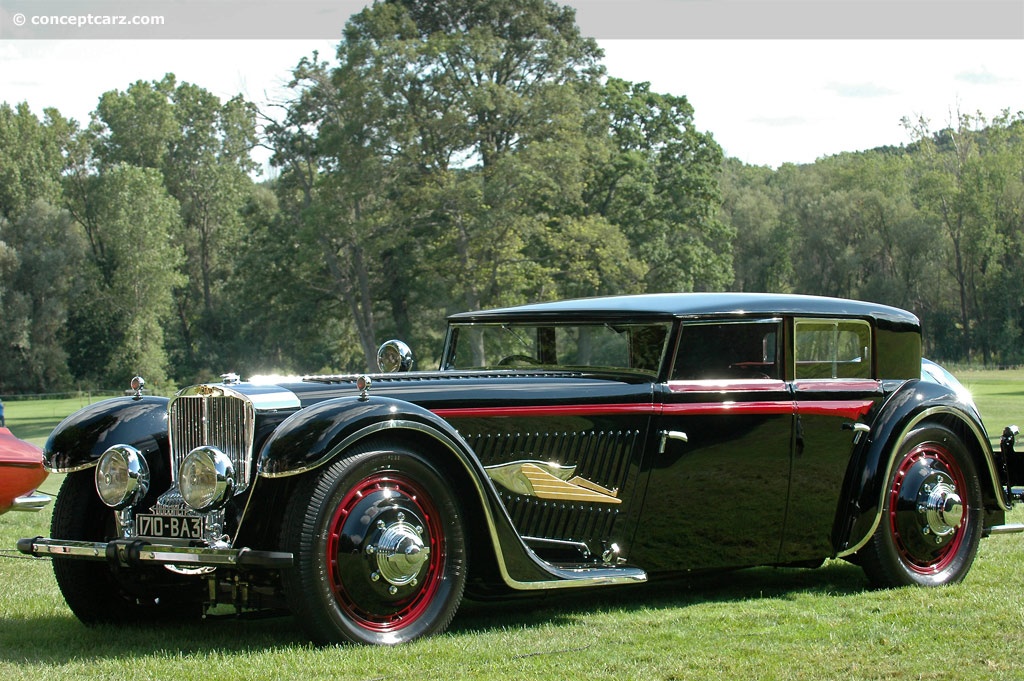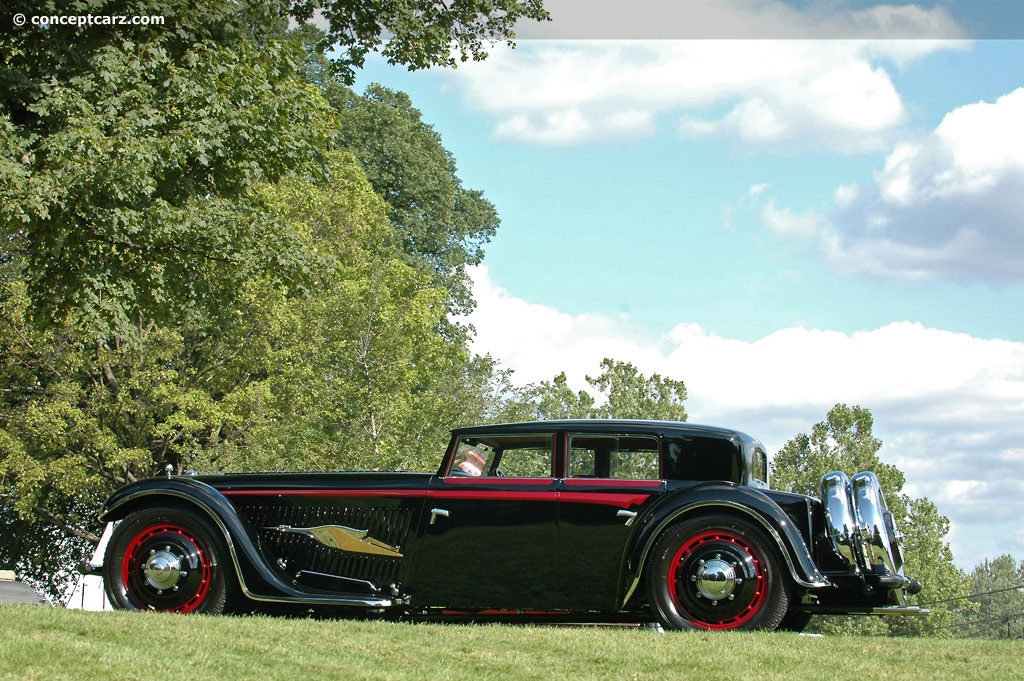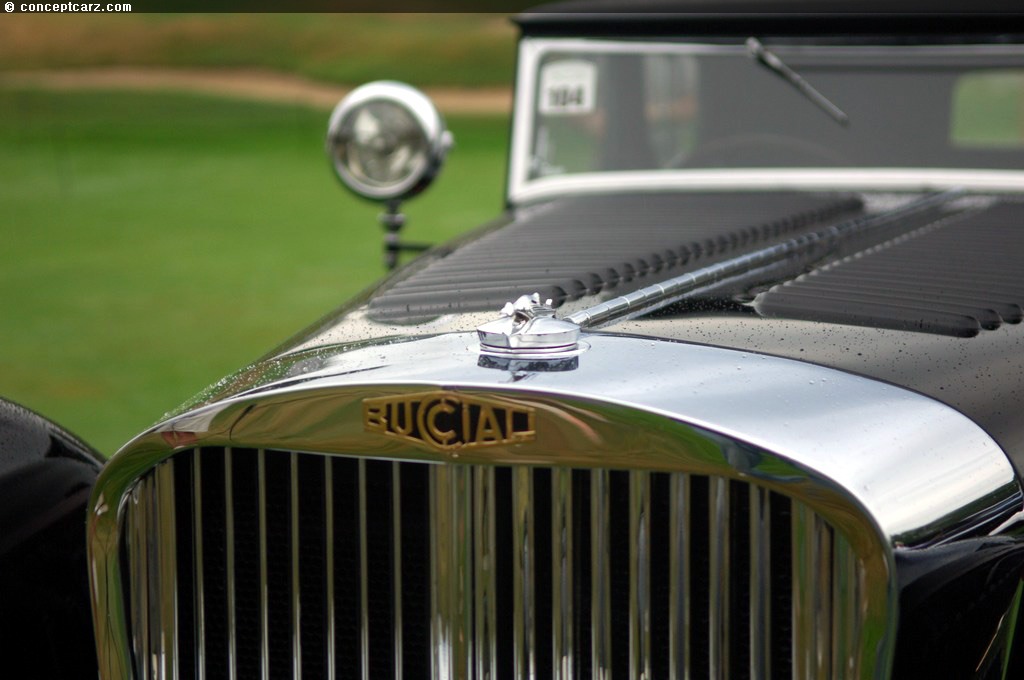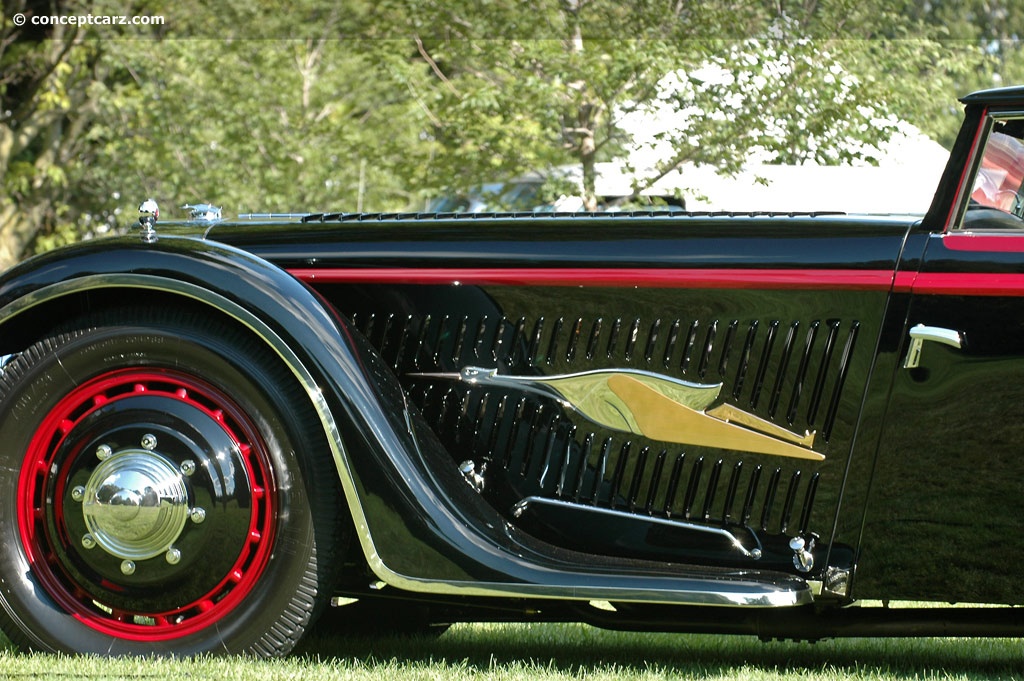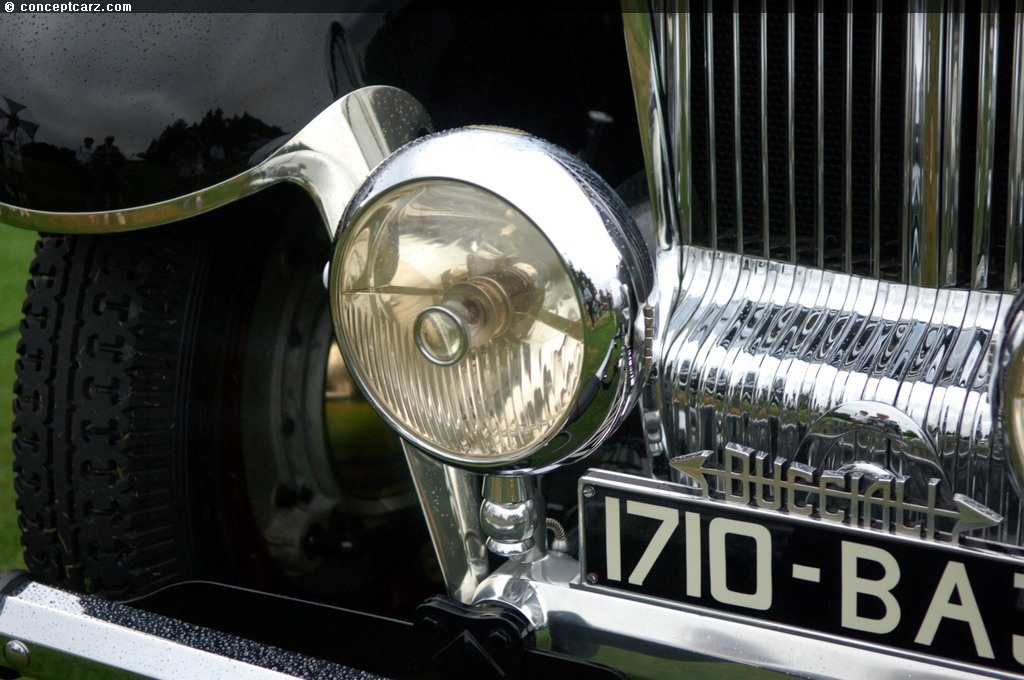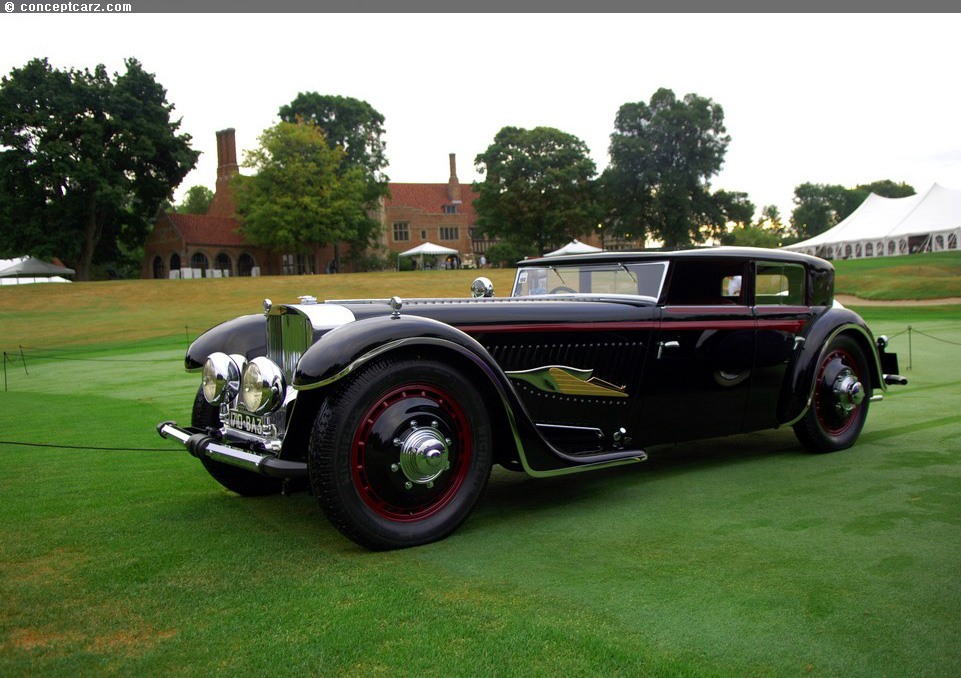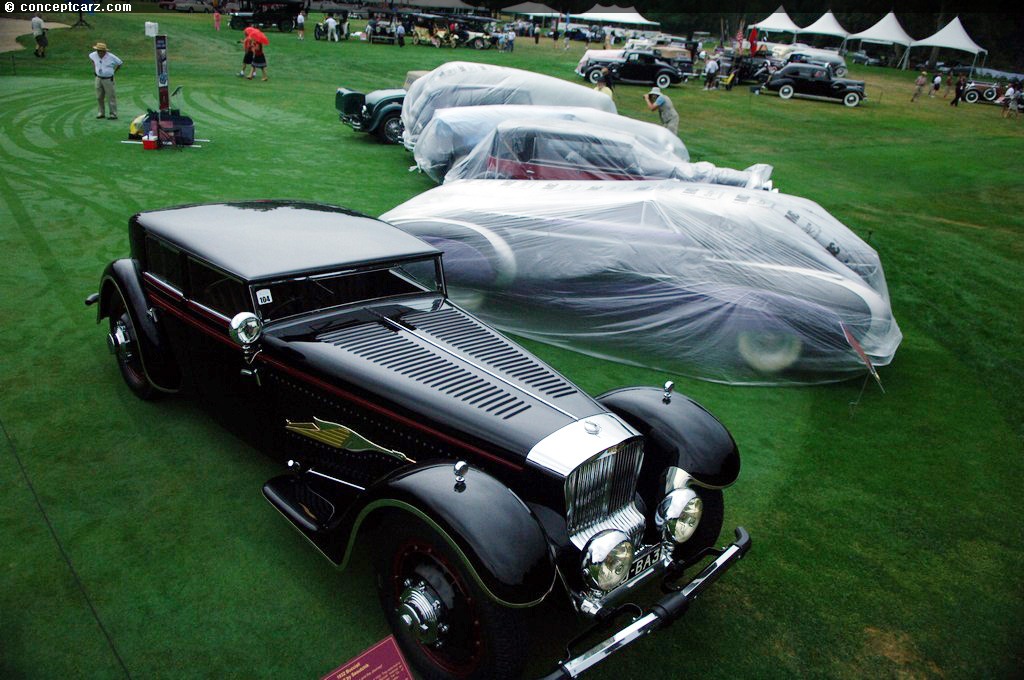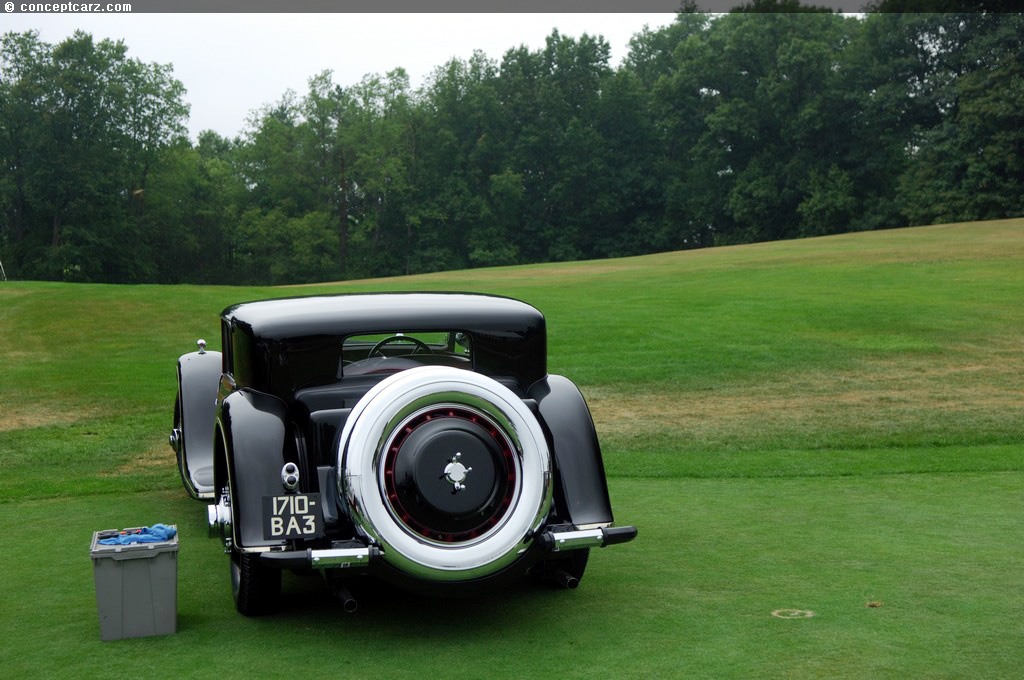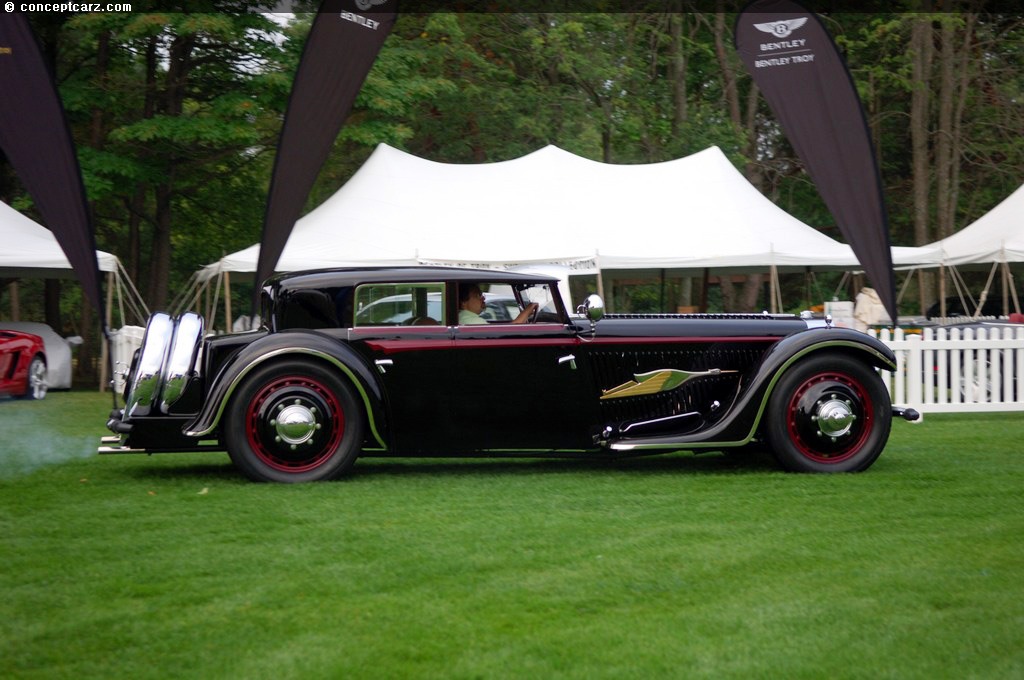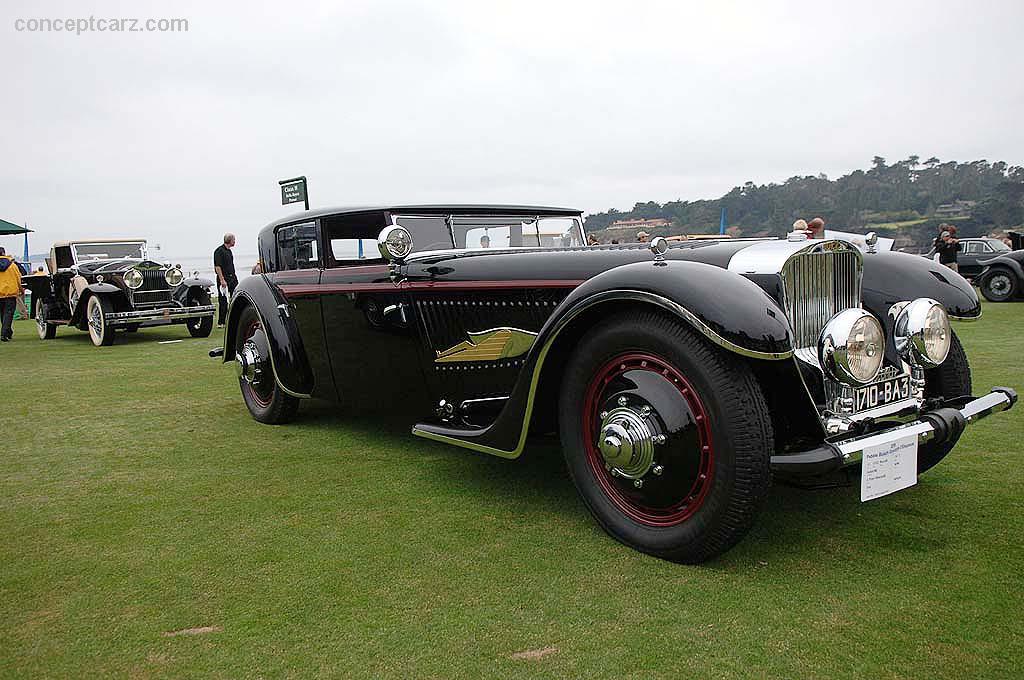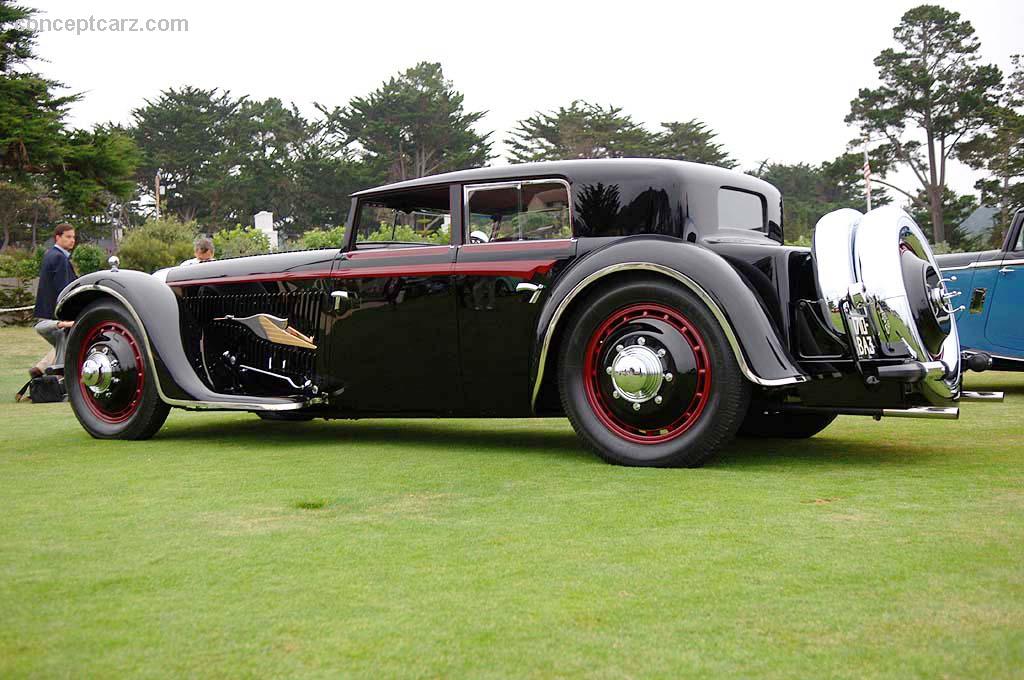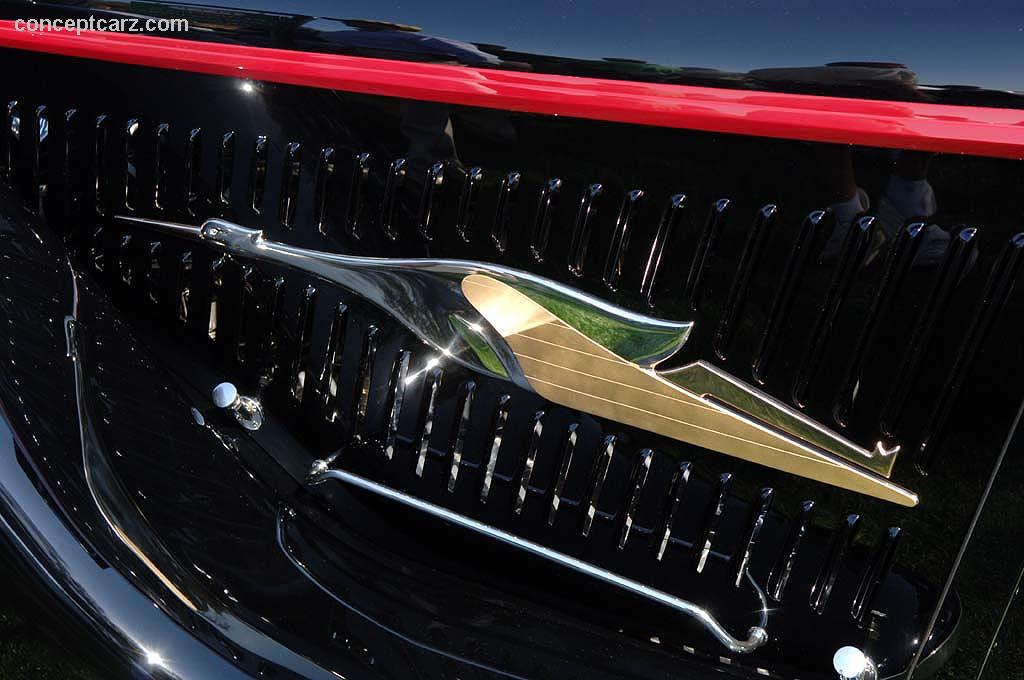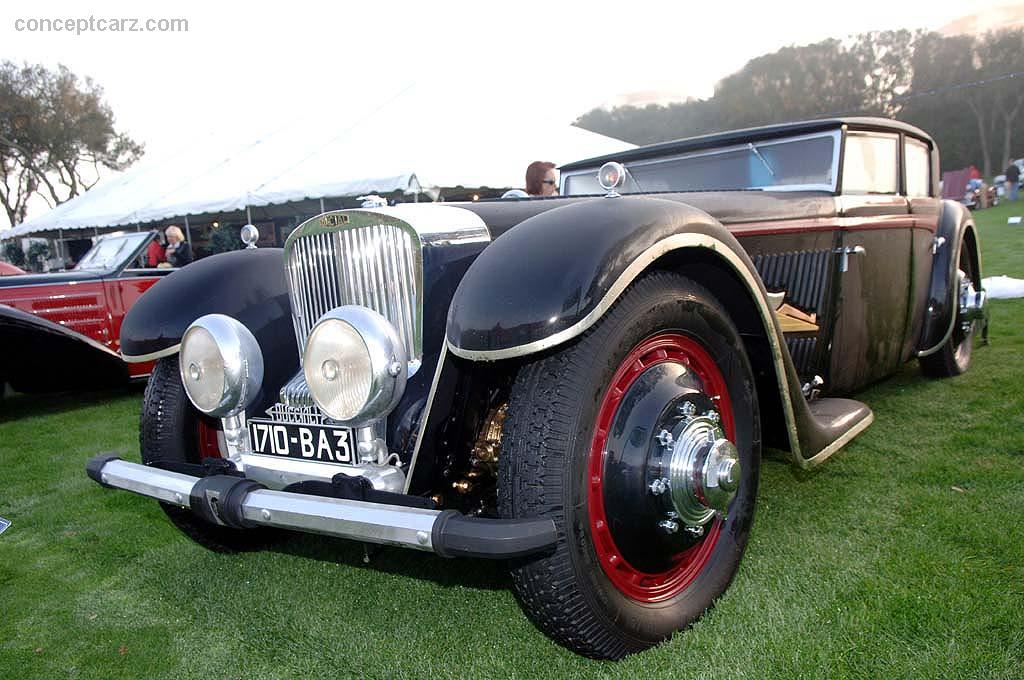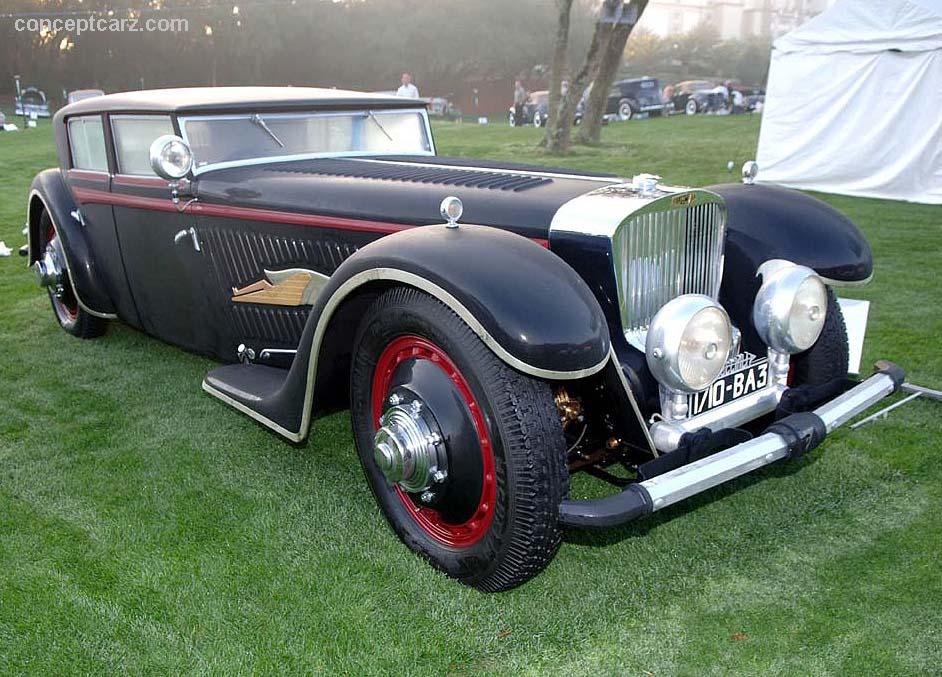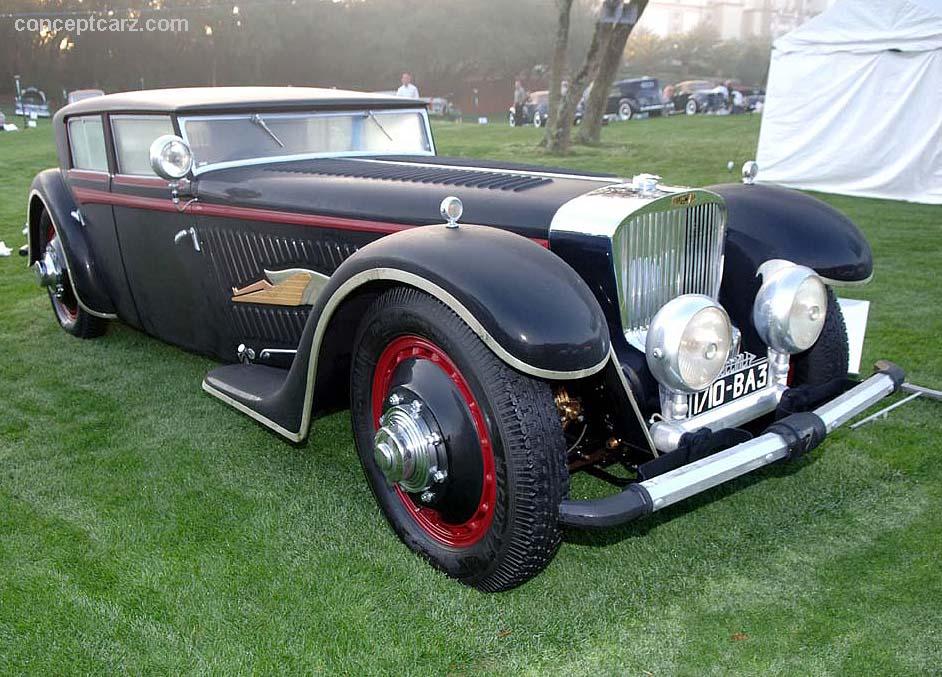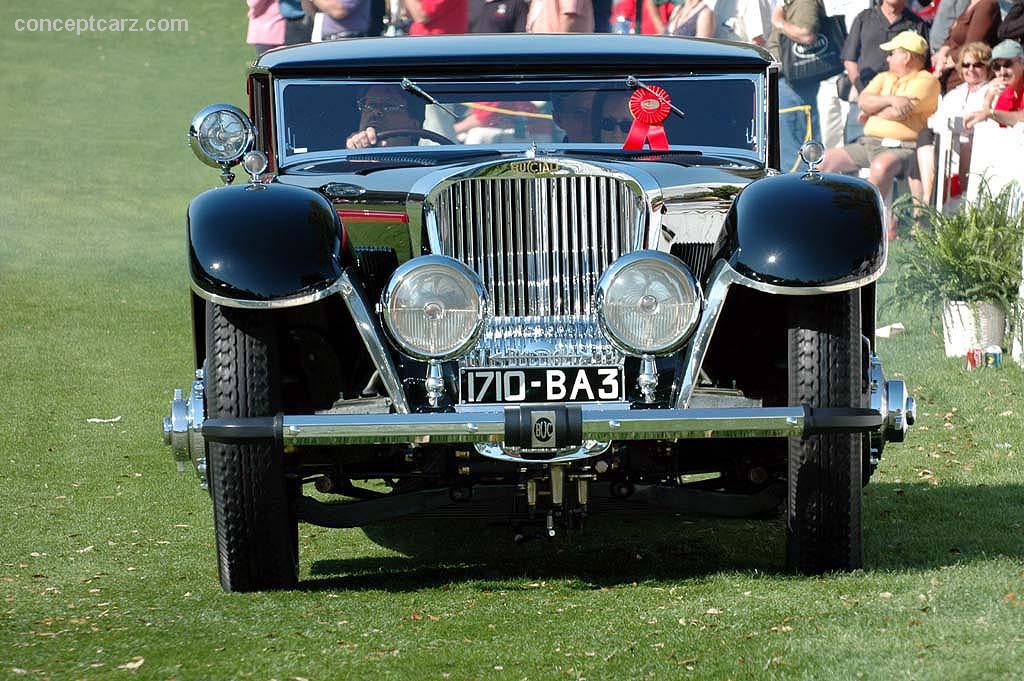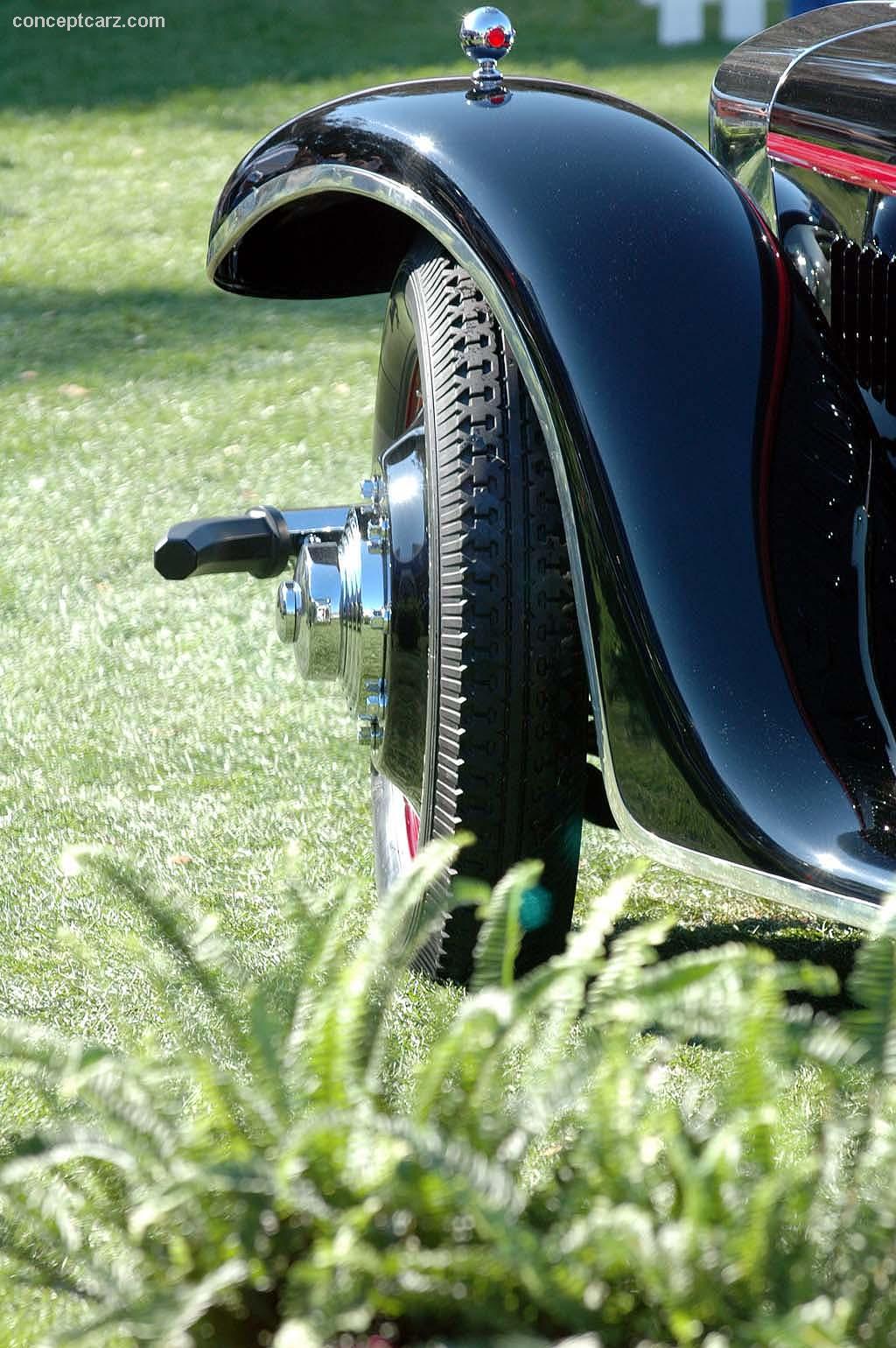Starring at the 1932 Paris Auto Show, the front-wheel drive, twelve-cylinder, sleeve-valve engined Bucciali stunned show-goers. Cloaked in one-off coachwork by Saoutchik, the car received acclaim as the most advanced and modern French automobile.
The Bucciali was sold originally to a Paris banker, who drove it for three years. The coachwork was then removed and fitted to a Type 47 Bugatti chassis. The Bugatti fitted with the Bucciali’s coachwork was sold and brought stateside after World War II. The original chassis remained behind in France.In the 1970s, the Bucciali body was reunited with the original chassis, which was purchased from a French collector. With the assistance of Paul Albert Bucciali, the car was restored to the original, spectacular state that it is today.
‘Fleche d’Or’ BerlineCoachwork: Saoutchik
Paul-Albert Bucciali built only six cars between 1926 and 1932. They were built to display the front-wheel-drive system Bucciali invented. Bucciali received an American patent and licensed his technology to Peerless Motor Car Company of Cleveland, Ohio. Unfortunately for Bucciali, Peerless never used the license.
This Bucciali features a specially designed Voisin V12 sleeve-valve engine with four carburetors.
Drive to the front axle is through a four-speed transaxle. The huge wheels, fabricated from steel, have integral brake drums. The coachwork is by the French Carrozzeria Saoutchik. The distinctive stork on each hood side is made from German silver, phosphor bronze and gold-plated brass. This stork was the insignia of Bucciali’s WWII fighter squadron. The original chassis price was an incredible 130,000 Francs and the coachwork was an additional 85,630 Francs.
Only one Bucciali was sold to the public. This is it!
The original owner, George Roure, displayed his Bucciali in the 1932 Paris Auto Show. Subsequently, he sold it to Count de Rivaud, who later mounted the body on a more maneuverable Bugatti chassis. In the 1970s, the body was reunited with what remained of the Bucciali chassis and drivetrain, and after a long, challenging, restoration the Bucciali was returned to its original state. The work was begun in Detroit, by the noted collector Raymond Jones. In addition to using many factory blueprints, Paul Albert Bucciali was consulted for special detail as to the colors and design of the interior. The car now appears exactly as displayed at the Paris show in 1932.
